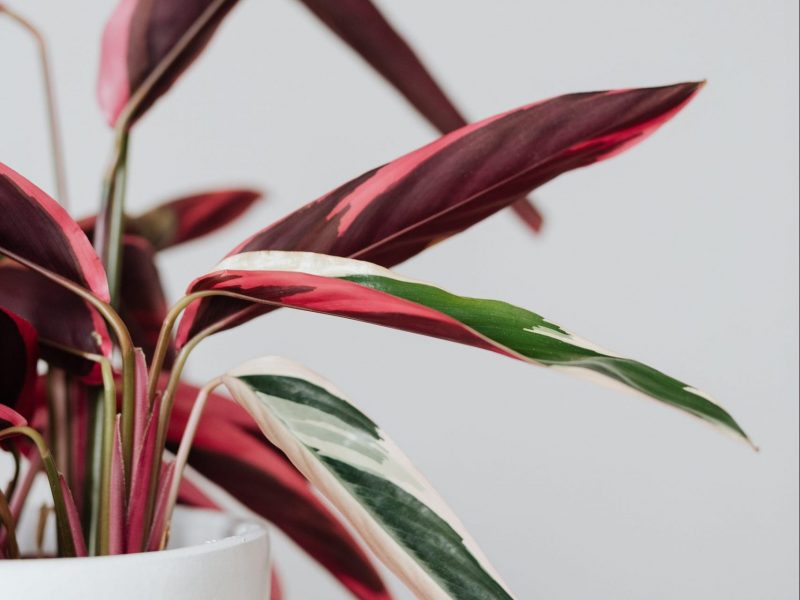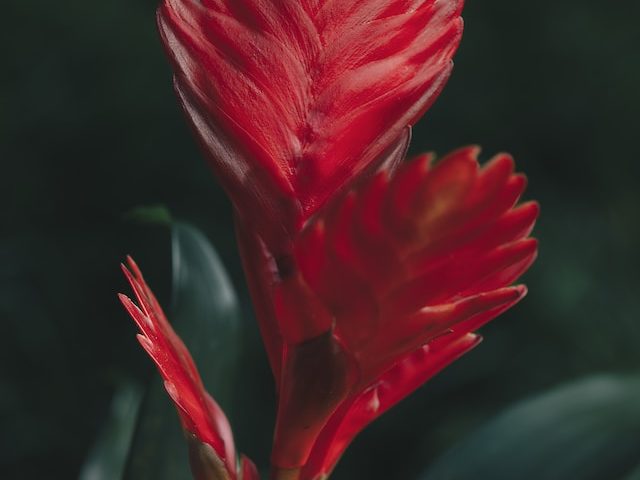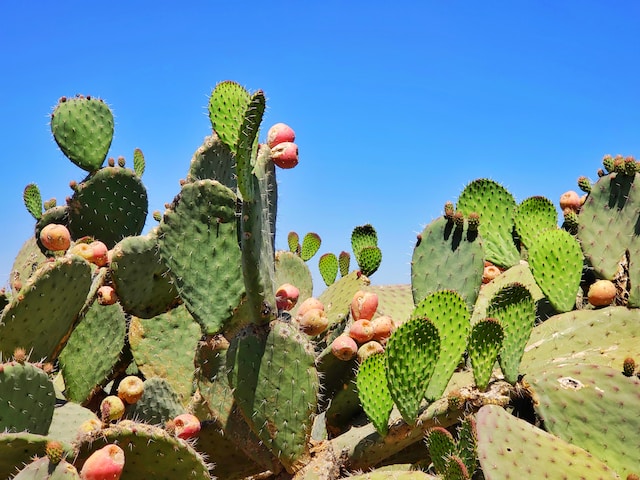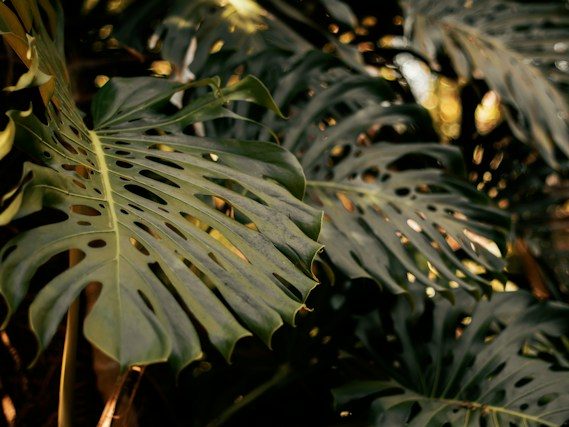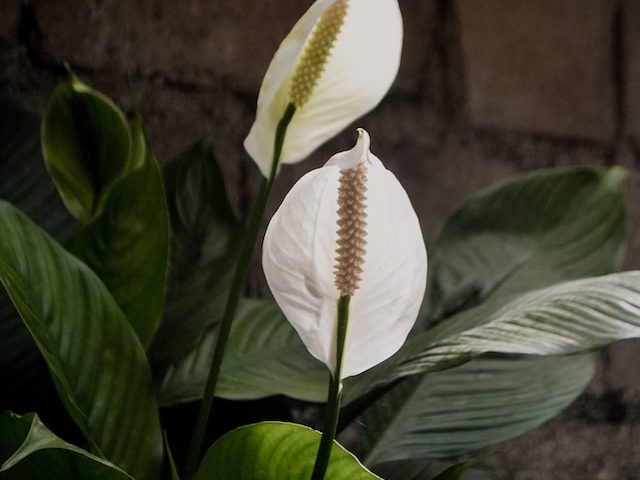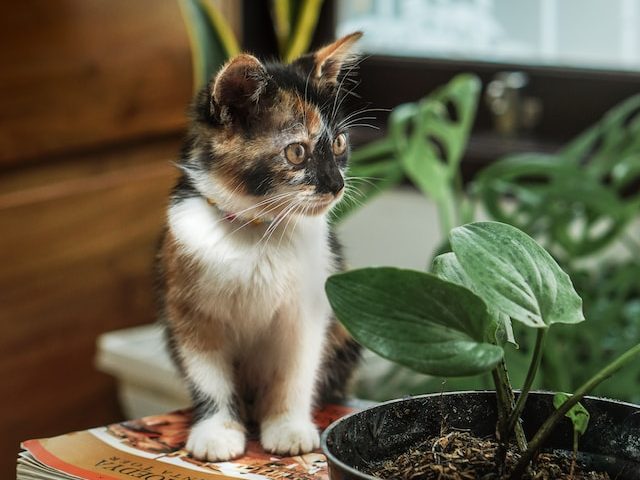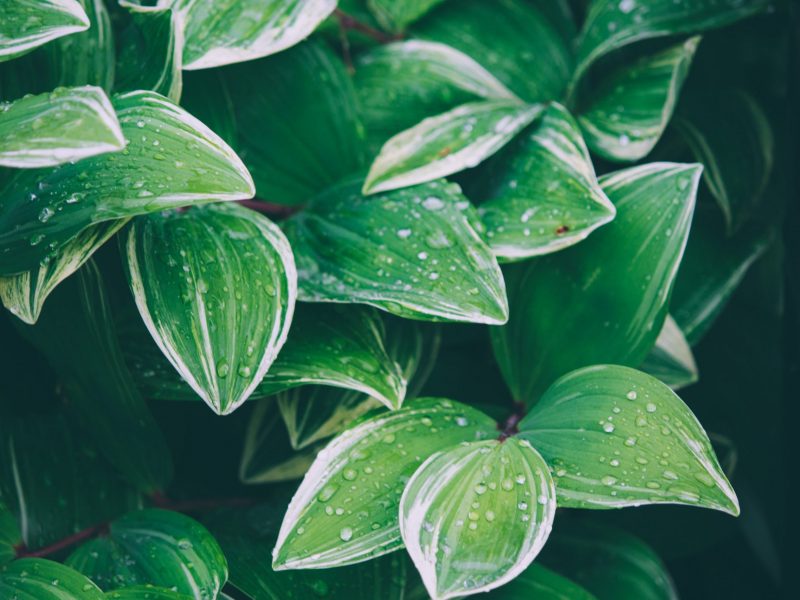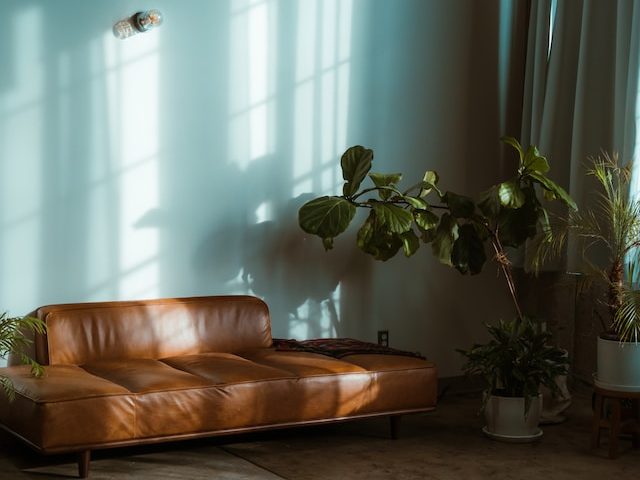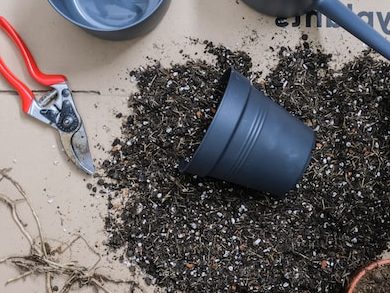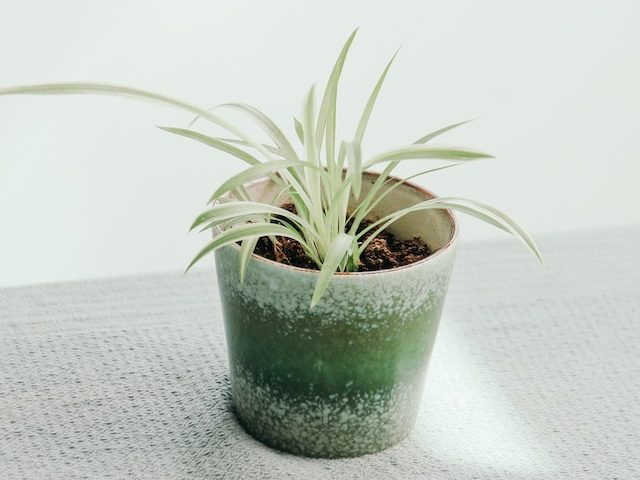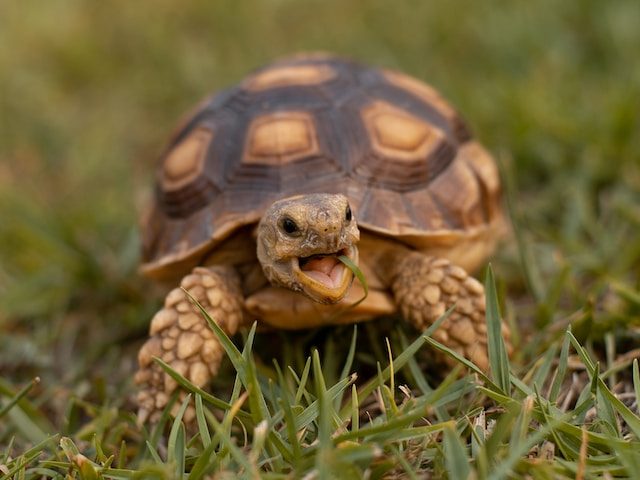Tillandsia Cyanea
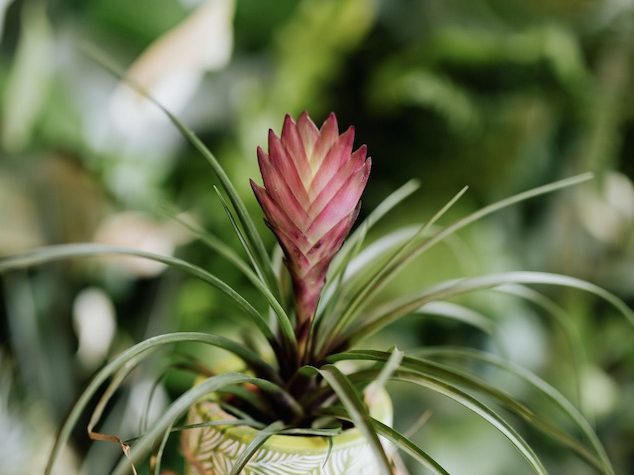
Introduction to the Pink Quill Plant
The Pink Quill Plant, officially known as Tillandsia Cyanea, is an evergreen perennial that hails from the rainforests of Ecuador. A member of the Bromeliad family, the Pink Quill Plant is best known for its vibrant pink to purple inflorescence, which resembles a feathered quill. A wonderful and exotic addition to any indoor plant collection, the Pink Quill Plant is not only visually striking but also exceptionally low-maintenance.
The Plant’s Unique Features
What truly sets the Pink Quill Plant apart is its remarkable, fan-shaped bloom. This bloom, or ‘quill’, is actually a large bract that turns a vivid pink at maturity and can remain vibrant for months on end. Small violet flowers then emerge from the quill, adding to the plant’s overall charm.
Why Choose a Pink Quill Plant?
The Pink Quill Plant is a great choice for beginners and seasoned plant parents alike. Its easy care requirements, coupled with its beautiful and unique appearance, make it a popular choice for home or office spaces. Plus, it’s excellent for improving air quality and adding a touch of tropical flair to any environment.
Understanding the Pink Quill Plant’s Characteristics
When it comes to the world of epiphytic bromeliads, the Pink Quill Plant is a standout with its distinctive features. In its native environment, it grows freely on trees without causing harm, a characteristic trait of epiphytes. The plant rarely exceeds a height and width of 50cm, making it an ideal choice for indoor decoration.
Key Characteristics of Pink Quill Plant
- Height and Spread: Typically, the plant grows to a size of around 50cm in both height and width.
- Flower Colour: The plant produces vibrant blue-violet flowers from a pink bract.
- Bloom Time: Flowers usually bloom from late summer to autumn, but this can vary depending on the care provided.
- Leaf Colour: The leaves are deep green in colour and can grow up to 20 inches long.
- Hardiness: The Pink Quill Plant is known for being hardy and can withstand a range of conditions.
Lighting Requirements for a Pink Quill Plant
Understanding the lighting needs of your Pink Quill Plant is crucial to its growth and bloom cycle. This plant is native to the cloud forests of Ecuador and therefore thrives in bright, indirect light. Direct sunlight, particularly in the hotter months, can lead to leaf burn.
Indoor Lighting:
- Position your Pink Quill Plant near a well-lit window, preferably facing east or north.
- Avoid southern windows as these can emit harsh, direct sunlight, especially during summer months.
- In darker areas, consider augmenting natural light with artificial grow lights.
Outdoor Lighting:
- If your Pink Quill Plant is potted outside, it should be placed in a shaded area that receives filtered sunlight throughout the day.
- Avoid placing the plant in direct sunlight; a few hours of morning sun will be adequate.
Watering your Pink Quill Plant: Tips and Tricks
To maintain your Pink Quill Plant’s lush, tropical allure, understanding its watering needs is crucial. A member of the bromeliad family, Tillandsia Cyanea, thrives in moist, humid environments. Here, we will delve into some watering tips and tricks for this elegant, feather-like plant.
Tip #1: Monitor your Watering Frequency
Watering frequency is a balancing act with the Pink Quill Plant. It enjoys moist conditions, but it’s also susceptible to rot if consistently overwatered. As a rule of thumb, water your plant once a week during the summer and reduce it to once every two weeks during the colder months.
Tip #2: Use the Soak and Dry Method
For best results, employ the ‘soak and dry’ method. Fully immerse your plant in water for a period of 10-20 minutes, then allow it to dry completely before the next watering. This method mimics its natural rainforest habitat where rainfall is heavy but interspersed with periods of drying sunlight.
Tip #3: Adapt to Your Environment
Be mindful that the Pink Quill Plant’s watering needs can vary depending on environmental factors. In hotter, drier climates, or when indoor heating is used, you may need to water more frequently.
Tip #4: Water Quality
Finally, consider the quality of water you’re using. Rainwater or distilled water is best for Pink Quill Plants, as they can be sensitive to the minerals found in tap water. If tap water is your only option (and you live in a hard water area), let it sit for 24 hours before using it to allow any chlorine to evaporate.
Temperature Requirements
These plants thrive in warm environments. During the daytime, a temperature range of 68-77°F (20-25°C) is ideal for the Pink Quill. At night, a slight drop to around 59-64°F (15-18°C) reflects its natural habitat, where temperature variations between day and night are common.
Extreme heat or cold can be detrimental to your plant so watch out for large fluctuations. It’s not frost-hardy and high temperatures can cause it to dehydrate quickly.
You also must remember that consistency is key. Drastic changes in temperature can cause stress to the plant, potentially leading to leaf drop or a halt in growth.
Humidity Requirements
One defining characteristic of the Pink Quill Plant is its love for high humidity. Originating from the rainforests of Ecuador, this tropical plant thrives in a humid environment.
Humidity Levels: Aim to keep the humidity level around your plant between 50% and 60%. However, this plant is rather forgiving and can tolerate levels as low as 40%.
If you need to boost the humidity a little, here are the top two methods to try:
- Use a Humidifier: If you live in a dry climate, consider using a humidifier to maintain the humidity level around your plant.
- Misting: Another effective method is to mist your Pink Quill plant regularly with distilled water. However, avoid over-watering as this can lead to root rot.
Remember, while Pink Quill plants are lovers of humidity, they also need good air circulation to thrive. Make sure the area around your plant isn’t overly stuffy or stagnant.
Flowers on a Pink Quill Plant: Everything you need to know
Their flowers are a lovely shade of violet-blue, a stunning contrast to their pink bract, commonly known as the ‘quill’. They bloom sequentially along the quill, ensuring a long-lasting display of beauty. Each flower stays vibrant for a few days before wilting away.
Blooming Cycle
Interestingly, a Pink Quill Plant flowers only once in its lifetime. But don’t be dismayed! Though a single blooming cycle, it can last from several weeks to a few months, providing an extended spectacle of colour and allure.
After Blooming
Once the blooming cycle concludes, the plant focuses on producing ‘pups’, or baby plants. These pups sprout around the base of the mother plant. With proper care, they mature into new, independent plants, allowing the cycle of life to continue.
Caring for the Flowers
Caring for these flowers is very straightforward. They don’t require any special attention, apart from regular watering and indirect sunlight. Just ensure you don’t overwater, as this can lead to rot.
Fertilizing Your Pink Quill Plant: How, Why and When
Why Fertilize?
Fertilising your Pink Quill Plant provides it with essential nutrients, like nitrogen, phosphorous, and potassium, that it cannot get sufficiently from potting soil alone. This nutrient boost encourages the growth of vibrant green leaves and stunning pink flowers. It also enhances the plant’s overall health, strengthening it against pests and diseases.
How to Fertilize?
Fertilising your Pink Quill Plant doesn’t have to be a daunting task. Simply choose a high-quality, water-soluble fertiliser, and mix it with water following the recommended ratio on the product package. Then, thoroughly drench the soil with the fertiliser solution, ensuring it’s fully absorbed.
When to Fertilize?
As a rule of thumb, the Pink Quill Plant should be fertilised during its active growth period, which is typically during the warmer months of spring and summer. You can fertilise it once a month during this period. However, in winter, when the plant enters a state of dormancy, fertilisation should be paused completely.
Note: Over-fertilisation can harm your Pink Quill Plant, leading to leaf burn or even plant death. Always stick to the recommended dosage (or less), and remember that less is often more when it comes to plant nutrition.
Pruning your Pink Quill Plant
When to Prune
Usually, it’s best to prune your Pink Quill Plant in early spring. This is the period just before the plant’s active growth phase. However, you can prune individual leaves at any time if you spot dying or diseased areas of the plant.
How to Prune
Begin by sterilising your pruning shears to avoid transmitting diseases or pests. Simply snip off the dead or yellowing leaves at the base. Remember to do this gently to avoid causing unnecessary stress or damage to the plant.
Post-Pruning Care
After pruning, give your plant a thorough watering. This helps to speed up the healing process and encourages new growth. However, ensure that the plant isn’t left in standing water, as this could cause root rot.
Choosing the Right Soil for Pink Quill Plant
This exotic plant thrives in loose, well-draining soil, which mimics its natural habitat. Commercially available orchid mix is a great choice, as it typically contains bark, perlite, and charcoal, which promote excellent drainage. If you prefer a homemade mix, combine equal parts perlite, peat moss, and coarse sand.
While the Pink Quill Plant is an air plant, meaning it absorbs most of its nutrients from the air, it still requires some nutrients from the soil. Therefore, rich, organic material such as compost or worm castings can be added in small amounts to provide these essential nutrients.
Pink Quill Plant Repotting Guide
With a couple of easy-to-follow steps, you can ensure your plant continues to thrive and bloom beautifully. Here’s a simple guide to help you through the process:
When to Repot
It’s crucial to understand when to repot your Pink Quill Plant. Generally, this plant should be repotted every 1.5-2 years to encourage growth. However, if your plant appears unhealthy or its roots are taking up too much space, you may need to repot it sooner.
Choosing the Right Pot
Ensure the new pot is only slightly larger than the current one (to avoid instability) and has sufficient drainage holes. This helps prevent waterlogging, a common issue for Tillandsia Cyanea.
Procedure
- Preparation: Start by preparing a potting mix suitable for epiphytes. A mixture of bark, perlite, and peat moss works well.
- Removal: Gently remove the Pink Quill Plant from its current pot, taking care not to damage the roots.
- Placement: Place the plant in the centre of the new pot and slowly add the potting mix around the roots until the plant is secure.
- Watering: Water the plant thoroughly after repotting. This helps the plant settle into its new home.
How to Propagate a Pink Quill Plant
1. Wait for the Right Time
Firstly, timing is crucial. The optimal time for propagation is when the plant starts to produce offsets, or ‘pups’, usually after blooming.
2. Carefully Separate the Pup
Identify a healthy-looking pup that is at least one-third the size of the parent plant. Gently separate the pup from the mother plant using your hands or a clean, sharp knife.
3. Preparing the Pup
Before planting, let the pup dry out for a few hours to let the cut area callous over. This reduces the risk of bacterial and fungal infections.
4. Plant the Pup
Now, it’s time for the exciting part. Place the pup into a suitable pot filled with well-draining soil designed for epiphytes. Make sure you position the pup correctly, with the base just below the soil surface.
5. Provide Proper Care
Lastly, ensure that you provide the newly planted pup with the appropriate care. Water it lightly and keep it in a bright, humid environment. Remember, patience is key when propagating Pink Quill plants.
And there you go! With these steps, you’re well on your way to successfully propagating your Pink Quill plant. Happy planting!
Cleaning your Pink Quill Plant
Dust and grime can inhibit photosynthesis (yes even a thin layer of dust can reduce the amount of sunlight your plant is exposed to) and could potentially harbour pests. This is why regular cleaning is a must for all of your houseplants.
Step-by-step cleaning process:
- Firstly, prepare a soft, damp cloth. Avoid using any harsh cleaning agents or detergents, as these can harm the natural coating on the leaves.
- Gently wipe down each leaf, paying particular attention to where the leaves join the stem. This is a common spot for dust accumulation.
- Give special attention to the pink quill itself. Use a soft brush or cotton swab to lightly dust this part.
- After cleaning, allow the plant to air dry. Do not place it in direct sunlight immediately after a wipe-down, as water droplets can magnify sunlight and cause leaf burn.
Diagnosing, Treating and Preventing Pests on your Pink Quill Plant
When it comes to Pink Quill plants, pests can be a real nuisance if not identified and treated promptly and can often kill your plant when not treated. Fortunately, there are a few common culprits to look out for and various effective treatments to keep your plant pest-free.
Common Pests
The usual suspects for pest infestations in Pink Quill plants (and most other houseplants too) include mealybugs, scale insects, and spider mites. These pests not only cause visible damage across the leaves but can also lead to stunted growth and even plant death if not addressed in time.
Recognising Pest Infestations
Regularly inspect your Pink Quill plant for signs of pest infestations. Symptoms often include yellowing leaves, tiny white cotton-like clusters (mealybugs), small brown or black bumps (scale insects), and fine webbing on the plant (spider mites).
Treating Pests
For mild infestations, a simple solution of water and mild soap can do the trick. Spray this on affected areas daily until the pests are eradicated. For more severe infestations, consider using horticultural oils or insecticidal soaps. Always remember to test any treatment on a small area first to see how the plant reacts.
Preventing Pests
Prevention is always better than cure, and this holds true for Pink Quill plant care. Ensure that your plant has the right conditions – adequate light, proper watering, and good air circulation. These conditions will make your plant less appealing to pests. Regularly clean your plant and its surrounding area to prevent pest build-up.
Pink Quill Plant Toxicity
The Pink Quill, or Tillandsia Cyanea, is non-toxic to both cats and dogs.
However, it’s crucial to remember that any plant can cause minor gastrointestinal upset if ingested in sufficient quantities. Symptoms may include vomiting, diarrhoea, or loss of appetite.
Precautionary Measures:
- Even though the Pink Quill plant is non-toxic, it’s still recommended to place it out of reach of pets, especially if they’re known to be curious nibblers.
- Ensure to promptly clean up any fallen leaves or flowers to prevent accidental ingestion.
- In case your pet ingests a significant amount of the plant and exhibits symptoms, it’s best to consult with a vet immediately.
Pink Quill Plant FAQs
Quick and simple answers to the most common questions we see about the Pink Quill Plant.
Can Pink Quill Plants be grown indoors?
Yes Pink Quill Plants are actually great indoor potted plants and can thrive in a wide range of environments.
Are Pink Quill Plants easy to care for?
You’ll be pleased to know that Pink Quill Plants are super low maintenance and hardy. They don’t need much water and average room temperature and humidity will be fine.
How often do Pink Quill Plants bloom?
Pink Quill Plants only bloom once they are quite mature so it can take a couple of years before you see it flower. It’s normal for a relatively new plant to not produce any flowers so don’t be alarmed.
How much light does my Pink Quill Plant need?
Bright but indirect light is best for your Pink Quill Plant. Whilst they can adapt to lower light levels, growth might be slower and blooming will be less likely. Keep them away from direct light though as it can dry out the plant.
Common Problems with your Pink Quill Plant
Here are some common issues that you might run into. It’s important to diagnose any issues early to give your plant the best chance of bouncing back.
Why does my Pink Quill Plant have brown/yellow patches?
Brown or yellow patches on the leaves of your Pink Quill Plant suggest it has been scorched by sunlight. Move your plant away from direct light to a slightly shadier spot in your home.
Why do the flowers on my Pink Quill Plant die quickly?
If the flowers on your Pink Quill Plants are dying unusually fast then it may be due to a lack of humidity. Try to mist the plant daily, use a pebble tray or buy an affordable humidifier to boost the level of water vapour in the air around your Pink Quill Plant. This should prevent the flower on your Pink Quill Plant from dying too quickly.
Why doesn't my Pink Quill Plant grow any flowers?
It can take up to 3 years for your Pink Quill Plant to become mature enough to bloom and produce flowers. With the proper care and environment it will happen – so just be patient, the flowers are definitely worth the wait.
Why is my Pink Quill Plant dying?
If your Pink Quill Plant is prematurely dying then the most common cause is overwatering. Unlike most other houseplants, Pink Quill Plants don’t need regular watering and will survive with water once every 1-2 months. Refresh the potting mix if waterlogged and trim away the dead parts of the plant.



